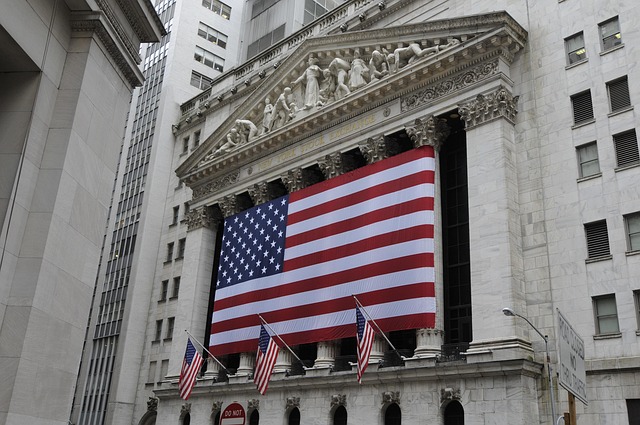Top Stock Exchanges By Daily Volume in 2024: An In-Depth Analysis
Author: Jameson Richman Expert
Published On: 2025-09-15
Prepared by Jameson Richman and our team of experts with over a decade of experience in cryptocurrency and digital asset analysis. Learn more about us.
In the rapidly evolving landscape of global finance, analyzing stock exchanges based on their daily trading volumes offers vital insights into market liquidity, investor engagement, and overall economic vitality. Trading volume—measured by the total value or number of shares, contracts, or derivatives exchanged during a trading session—is a key indicator of market activity and health. As of 2024, with millions of traders—including retail investors, institutional funds, hedge funds, high-frequency trading firms, and algorithmic traders—participating daily, understanding which exchanges dominate in volume reveals much about regional economic strength, technological infrastructure, regulatory environments, and investor sentiment. This comprehensive analysis not only highlights the leading stock exchanges by daily volume but also explores the underlying drivers of their dominance, operational features, technological innovations, and emerging trends shaping the future of global trading markets.

Introduction to Stock Exchanges and the Significance of Daily Trading Volume
Stock exchanges are the cornerstone of the modern financial system, functioning as regulated marketplaces where securities—including equities, bonds, derivatives, and exchange-traded funds (ETFs)—are bought and sold. They serve critical functions such as facilitating price discovery, providing liquidity, and enabling efficient capital transfer from investors to enterprises seeking funding. The daily trading volume on these exchanges is a pivotal metric that reflects the scale of market activity, offering a real-time snapshot of investor interest and market engagement.
High trading volumes are typically associated with highly liquid markets, characterized by minimal price impact, tight bid-ask spreads, and a broad participation base. Such markets foster transparency, reduce transaction costs, and bolster investor confidence in fair price formation. Conversely, declining volumes can signal waning investor interest, potential liquidity issues, or market consolidation phases—factors that can lead to increased volatility and reduced market efficiency. Consequently, monitoring trading volume patterns provides crucial insights into market stability, potential volatility triggers, and the economic outlook.
Furthermore, understanding volume dynamics enhances strategic decision-making for participants, enabling better timing of trades, risk management, and portfolio adjustments. Trends in trading volumes also serve as barometers for broader economic conditions, with elevated activity often correlating with economic growth and positive investor sentiment, while declining volumes may hint at caution or upcoming downturns.
The Importance of Monitoring Daily Trading Volume
For traders, investors, regulators, and analysts, daily trading volume transcends a mere statistic; it functions as an essential barometer of market sentiment and potential inflection points. Spikes in volume frequently coincide with macroeconomic data releases, corporate earnings reports, geopolitical events, or shifts in monetary policy—often escalating volatility and signaling trend amplification or reversal. For example, a sudden surge in trading activity during earnings season can reflect heightened investor interest and anticipation of significant price moves.
Conversely, periods of stagnant or declining volume may indicate market indecisiveness, hesitation among investors, or consolidation phases where prices oscillate within a range without clear direction. Such periods can lead to wider bid-ask spreads, reduced liquidity, and unpredictable price swings, complicating strategic trades and increasing risk. Recognizing volume patterns—such as divergence between price and volume or volume surges during breakouts—enables traders to refine entry and exit points, improve trade execution, and implement effective risk controls.
Moreover, volume analysis—coupled with fundamental factors like macroeconomic trends, regulatory changes, and technological developments—provides a comprehensive understanding of market dynamics. This empowers market participants to adapt strategies proactively, seize emerging opportunities, and mitigate risks associated with sudden liquidity shifts or volatility spikes.
Leading Stock Exchanges by Daily Trading Volume in 2024
As of 2024, several stock exchanges stand out globally for their substantial daily trading volumes, driven by regional economic strength, technological infrastructure, regulatory policies, and investor demographics. Below is an in-depth examination of these leading marketplaces, their operational features, and the factors contributing to their high trading activity.
1. New York Stock Exchange (NYSE)
The NYSE remains the world’s largest and most liquid stock exchange by daily trading volume, often surpassing hundreds of billions of dollars. Its extensive liquidity pool supports a diverse roster of blue-chip companies like Apple, Microsoft, ExxonMobil, and Johnson & Johnson, attracting a broad spectrum of global investors—retail, institutional, hedge funds, and high-frequency traders.
The NYSE employs a hybrid trading model that combines traditional open outcry floor trading with sophisticated electronic systems, ensuring transparency, resilience, and rapid execution. Its robust technological infrastructure includes high-speed data feeds, co-location facilities for algorithmic traders, and advanced surveillance systems to maintain market integrity. As the primary stock market in the U.S., it serves as a crucial economic indicator and influences global financial stability. Its high market capitalization, stringent listing standards, and deep liquidity foster large block trades, complex derivatives, and high-frequency trading, reinforcing its status as a market leader.
The NYSE’s continuous innovation—such as introducing new trading algorithms, blockchain-based settlement processes, and expanded data services—ensures its competitiveness amid rising digitalization and globalization of financial markets.
2. NASDAQ
Known for its technological orientation and focus on growth companies, NASDAQ has seen exponential growth in trading volume, driven by industry giants including Apple, Microsoft, Alphabet, Amazon, and Tesla. Operating entirely electronically since inception, NASDAQ’s infrastructure supports high-frequency, algorithmic, and complex order types, making it ideal for traders seeking speed and efficiency.
Its ecosystem includes a vibrant startup environment, with many biotech, fintech, and cybersecurity firms listing on the exchange to access global capital. The NASDAQ’s decentralized yet interconnected electronic platform ensures continuous market operation and high liquidity, facilitating rapid price discovery and efficient trading. Its global reach, extensive data services, and innovative market products—such as options, futures, and blockchain-based assets—contribute to sustained high trading volumes, often rivaling or exceeding those of the NYSE during peak periods.
The exchange’s commitment to technological advancement—like implementing AI-driven analytics, blockchain integration, and real-time risk management tools—cements its position as a leader in modern financial markets, especially among tech-savvy traders and institutional investors.
3. Shanghai Stock Exchange (SSE)
The SSE epitomizes China’s rapid economic ascent, with a predominant focus on state-owned enterprises (SOEs), financial institutions, and industrial conglomerates. Its trading volume is heavily driven by domestic retail investors, who often dominate trading activity due to cultural preferences and market participation incentives. Low trading costs, simplified access, and regulatory policies favoring retail involvement have historically supported high volumes.
Recently, initiatives like the Shanghai-Hong Kong Stock Connect and Shanghai-London Stock Connect have enhanced cross-border trading, attracting foreign institutional investors and increasing market depth. The SSE is also adopting advanced trading mechanisms—including algorithmic trading systems, real-time surveillance, and compliance frameworks—to manage surging volumes amid China's ongoing financial reforms. These measures aim to improve transparency, reduce market manipulation, and foster a more mature trading environment.
As China continues opening its markets to global investors and promotes reforms to boost capital market development, the SSE’s trading volume growth is poised to accelerate further, elevating its influence within the Asian and global financial ecosystems.
4. Hong Kong Stock Exchange (HKEX)
HKEX functions as a vital financial hub bridging mainland China with international markets. Its high daily trading volumes are driven by a diverse investor base, including retail traders from China, global institutional investors, and hedge funds focusing on Chinese A-shares, H-shares, and Red Chips. The exchange’s innovative Stock Connect programs—linking Hong Kong with Shanghai and Shenzhen—have dramatically increased liquidity and cross-border capital flows.
HKEX is also a preferred listing venue for leading Chinese tech giants seeking global exposure, further amplifying trading activity. Its comprehensive derivatives market, bond trading, and expanding digital assets segment position it as a key Asian financial hub. Recent initiatives such as the tokenization of assets, virtual asset trading platforms, and development of a digital yuan trading infrastructure are anticipated to further boost volumes and deepen market liquidity.
With ongoing regulatory modernization and the push toward financial innovation, HKEX’s role in facilitating capital flows between China and the world is expected to strengthen, maintaining its position among the top volume-generating exchanges in Asia.
5. Euronext
Covering major European markets—including Paris, Amsterdam, Brussels, Lisbon, and Dublin—Euronext has seen sustained growth in daily trading volume. Its broad product suite encompasses equities, derivatives, commodities, and ESG-focused funds, attracting both regional and international investors. Its integrated trading platform supports cross-border transactions, enabling efficient access to multiple European markets and enhancing liquidity.
Strategic focus on digital transformation, sustainability, and innovative financial products—such as ESG funds, green bonds, and digital assets—aligns Euronext with evolving investor preferences. The exchange’s initiatives aim to deepen liquidity pools, facilitate capital raising for innovative sectors, and solidify its position as a leading European marketplace for capital formation and trading excellence.

The Role of Cryptocurrency Exchanges in Shaping Global Trading Volumes
In recent years, cryptocurrency exchanges have dramatically reshaped the trading landscape, often eclipsing traditional markets in daily volume during bullish phases. Leading platforms like Binance, Coinbase, and Bitfinex report daily trading volumes frequently exceeding those of major stock exchanges, underscoring the rising adoption of digital assets globally.
Cryptocurrency exchanges enable trading in a wide array of digital assets, including Bitcoin, Ethereum, decentralized finance (DeFi) tokens, non-fungible tokens (NFTs), and derivatives. These platforms leverage advanced technologies—such as decentralized order books, margin trading, perpetual swaps, and automated market makers—to provide high liquidity, rapid execution, and 24/7 trading capabilities. Their borderless nature and accessibility attract retail traders, hedge funds, and institutional investors seeking diversification and innovative investment opportunities.
The rapid proliferation of DeFi, NFTs, and tokenized securities is transforming markets by enabling fractional ownership, liquidity pooling, and borderless transactions. As regulatory frameworks evolve worldwide—addressing AML, KYC, and consumer protections—these markets are expected to integrate more closely with traditional finance, further elevating global trading volumes and market depth.
Factors Impacting Fluctuations in Daily Trading Volume
Multiple interconnected factors influence daily trading volumes across exchanges, often interacting dynamically:
- Macroeconomic and geopolitical events: Elections, trade negotiations, inflation data, and geopolitical tensions can trigger surges or declines in activity, reflecting shifts in risk appetite and investor confidence.
- Regulatory environment: Policy changes, tightening regulations, or bans can temporarily suppress volumes, while deregulation and market liberalization typically stimulate participation and liquidity.
- Technological innovations: Advancements such as AI-driven analytics, blockchain scalability solutions, and high-speed trading systems enhance efficiency, attract sophisticated traders, and increase overall volumes.
- Market sentiment and behavioral factors: Herd behavior, fear, greed, and uncertainty influence volume patterns—especially during volatile periods or significant news events.
- Emerging markets and new asset classes: Participation from developing economies and growth in digital assets diversify liquidity sources, contributing positively to global trading activity.
Future Trends and Outlook for Global Trading Volumes
Several key trends are poised to shape the trajectory of global daily trading volumes in the coming years:
- Growth of emerging markets: Countries like India, Brazil, and Southeast Asian nations are investing heavily in developing their capital markets, which will boost regional liquidity and contribute to global volumes.
- Adoption of digital assets and tokenization: Continued expansion of cryptocurrencies, stablecoins, and tokenized securities—such as security tokens and digital bonds—will sustain high trading activity. Increased interoperability between traditional and blockchain markets promises further growth.
- Technological advancements: AI, machine learning, and automation will further optimize trading strategies, enhance execution speeds, and potentially amplify overall market volumes, especially as retail participation expands with improved access and tools.
- Regulatory clarity and harmonization: Globally aligned and transparent regulatory frameworks for digital assets, cross-border trading, and compliance will foster confidence, attract more participants, and deepen liquidity pools.
For detailed insights into automated trading systems, fee structures, market cycle analysis, and strategic planning, refer to this comprehensive review. To explore crypto market cycles and trend durations, visit this detailed report.

Conclusion
Monitoring the rankings and dynamics of stock exchanges by daily trading volume offers invaluable insights into market vitality, investor sentiment, technological progress, and regional economic trends. Leading traditional exchanges such as NYSE, NASDAQ, SSE, and HKEX continue to dominate, supported by their robust infrastructure, diverse listings, and regulatory frameworks. Simultaneously, the ascendance of cryptocurrency exchanges signals a transformative shift—integrating blockchain assets with traditional markets and unlocking new avenues for liquidity and innovation.
Staying informed about technological advances, regulatory developments, and market trends is essential for traders and investors aiming to optimize strategies and capitalize on emerging opportunities. For expert insights on automated trading, market analysis, and tactical strategies, explore this authoritative resource.